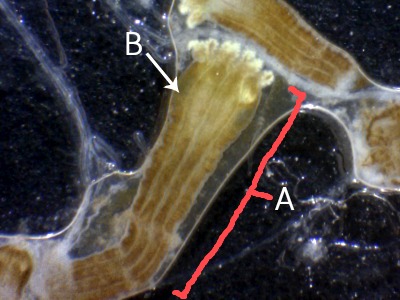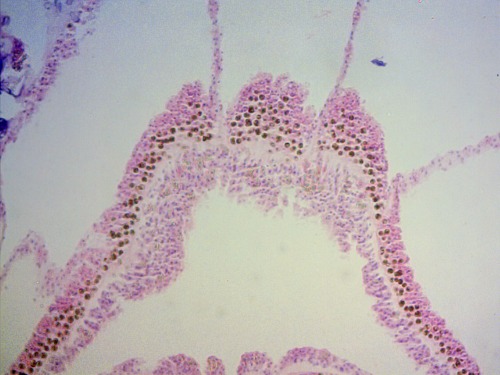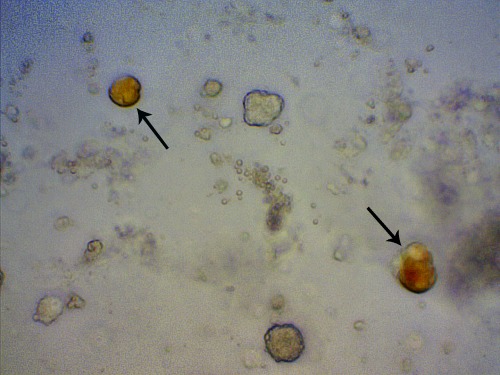
Sarcophyton ehrenbergi, like most hard corals, have an internal association with algae symbionts which assist with acquiring nutrients for the host while providing the symbionts with nutrients, CO2, and shelter (Fox et al., 2004). In soft corals, zooxanthellae are located all over the polyps (pic 1), specifically in the gastro dermal cells (pic 2) and in the gastro vascular cavity where it is free from membrane-bound vacuoles (Fabricius & Alderslade, 2001). From studied specimen, zooxanthellaes were also found when mucus were extracted (pic 3). These symbiotic associations with zooxanthellaes are very important to the host, to the point where it can highly influence where the species are able to expand its colonies to (Fabricius & De’ath, 2008).
Amongst different types of coral, there are different types of clade of Symbiodinium. For S. ehrenbergi specifically, only Symbiodiniums from Clade C reside in the coral, and depending on what kind of coral the Symbiodinium resides, the level of resistance to bleaching changes thus having an important role for the coral survival (Strychar et al., 2005).
 |
Pic 1 Dissecting microscopic view of a whole polyp removed from colony A: the anthocodia (polyp) B: Individual brown green dot seen on the surface of the polyps are a single zooxanthellae.
|
| Pic 2 Stained microscopic view of the tip of a polyp. Brownish green dots that line the gastro- dermis are a collection of zooxanthellaes. |
 |
 |
Pic 3 Microscopic view of mucus collected from the studied specimen. Some zooxanthellae have been found to float around the mucus. |
|